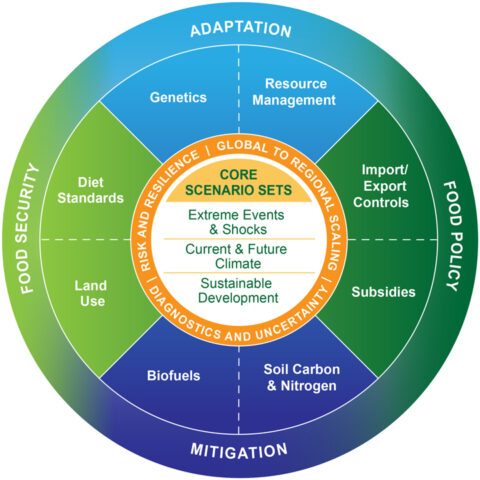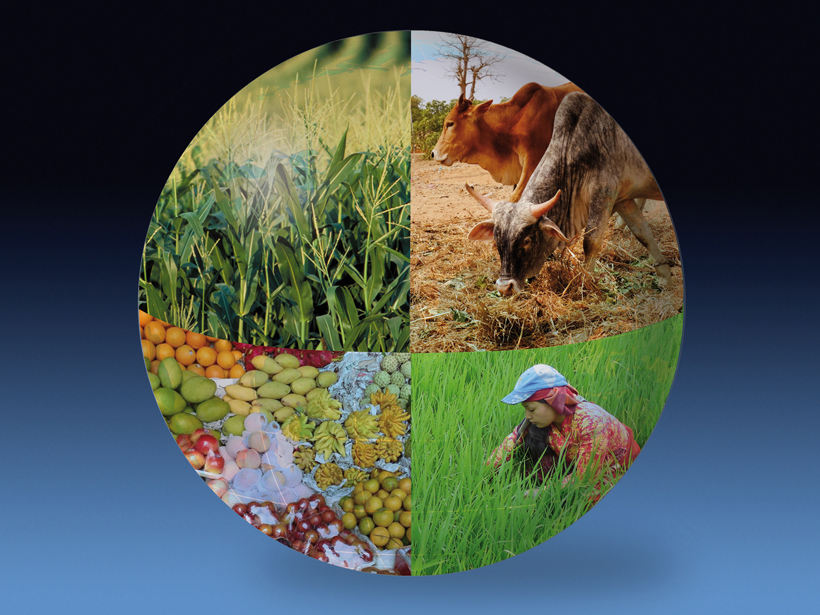The combination of a warming Earth and an increasing population will likely strain the world’s food systems in the coming decades. Experts involved with the Agricultural Model Intercomparison and Improvement Project (AgMIP) focus on quantifying the changes through time. AgMIP, a program begun in 2010, involves about 800 climate scientists, economists, nutritionists, information technology specialists, and crop and livestock experts.
In mid-September 2015, the Aspen Global Change Institute convened an AgMIP workshop to draft plans and protocols for assessing global- and regional-scale modeling of crops, livestock, economics, and nutrition across major agricultural regions worldwide. The goal of this Coordinated Global and Regional Integrated Assessments (CGRA) project is to characterize climate effects on large- and small-scale farming systems.

Three outcomes stemmed from discussions among workshop participants. First, workshop attendees agreed that global agricultural models should be used to address extreme events and shocks, such as how to respond to simultaneous severe droughts and floods occurring across multiple breadbasket regions, as well as other shocks, such as economic crises and conflicts. Second, participants agreed to expand the scope of AgMIP to include near-term forecasts, ranging from within-season and interannual timescales to decadal timescales. Finally, participants agreed that nutrition metrics for agricultural production must go beyond calories to include dietary intake and nutrients. These conclusions will inform the CGRA simulations on adaptation, mitigation, food security, and food policy
Because CGRA will be based on simulation protocols agreed on by the participating scientists, it represents a quantum step forward in producing consistent multimodel, multidiscipline, and multiscale assessments of agricultural and food security impacts, including robust characterizations of uncertainty and risk. Simulations will be rooted in historical observations and climate projections from the two recent versions of the Coupled Model Intercomparison Project (CMIP5 and CMIP6) and will be driven by scenarios that link to the Representative Concentration Pathways (RCPs) and Shared Socioeconomic Pathways (SSPs) used in the Intergovernmental Panel on Climate Change’s assessment reports. Participants discussed how CGRA will be coordinated through the development of detailed new Representative Agricultural Pathways (RAPs)—a logically consistent set of drivers and outcomes—at both global and regional scales.
CGRA results will have direct implications for international climate policy, national adaptation and mitigation planning, and development aid. Meeting participants affirmed that CGRA outputs will be available to inform and improve integrated assessment modeling, nitrogen and carbon cycle simulations, and projections of impacts on land use, water resources, ecosystems, and urban food supply.
Draft protocols for CGRA will be developed and posted on the AgMIP website for public comment by the agricultural modeling community. The next CGRA workshop will take place at the 6th AgMIP Global Workshop in Montpellier, France, in June 2016.
—Cynthia Rosenzweig, NASA Goddard Institute for Space Studies, New York, N.Y.; email: [email protected]; John Antle, Oregon State University, Corvallis; and Joshua Elliott, University of Chicago, Chicago, Ill.
Citation: Rosenzweig, C., J. Antle, and J. Elliott (2016), Assessing impacts of climate change on food security worldwide, Eos, 97, doi:10.1029/2016EO047387. Published on 9 March 2016.
Text © 2016. The authors. CC BY-NC 3.0
Except where otherwise noted, images are subject to copyright. Any reuse without express permission from the copyright owner is prohibited.

